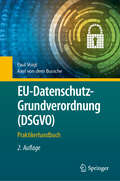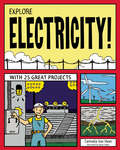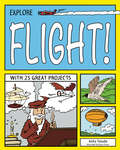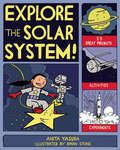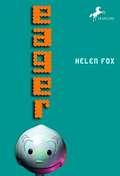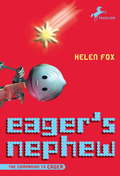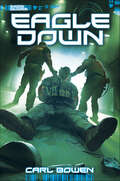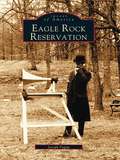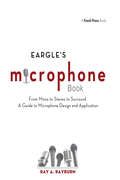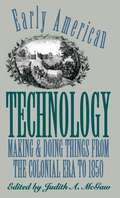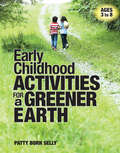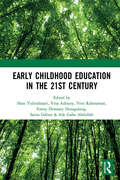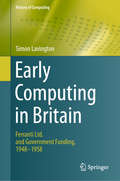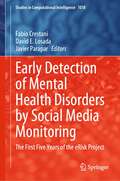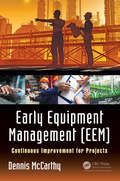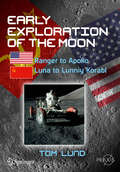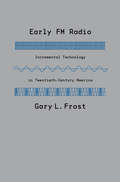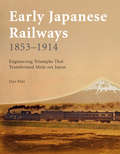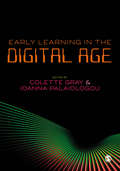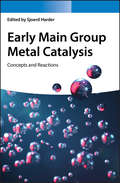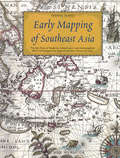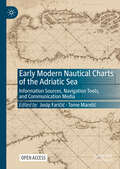- Table View
- List View
EU-Datenschutz-Grundverordnung (DSGVO): Praktikerhandbuch
by Paul Voigt Axel von dem BusscheDieses Praktikerhandbuch gibt einen praxisnahen Überblick über die Vorgaben der DSGVO und das deutsche Datenschutzrecht. Das Handbuch widmet sich unter anderem den organisatorischen und materiellen Datenschutzanforderungen, den Rechten der betroffenen Personen, der Rolle der Aufsichtsbehörden, den Schadensersatzanspüchen und den Bußgeldern nach der Verordnung, sowie deutschen nationalen Besonderheiten. Es enthält zahlreiche Praxishinweise und Anwendungsbeispiele sowie eine kompakte Übersicht zu den datenschutzrechtlichen Vorgaben für ausgewählte Verarbeitungssituationen mit hoher Praxisrelevanz, wie Cloud Computing, Big Data und Künstliche Intelligenz. Das Handbuch wurde für die zweite Auflage vollständig überarbeitet und berücksichtigt umfangreich neue datenschutzrechtliche Rechtsprechung und Behördenstellungnahmen.
EU-Taxonomie-Konformität im Wohnungsbau: Rückbaubarkeit einzelner Bauteile in der Kreislaufwirtschaft und Lebenszyklusbetrachtung (Entwicklung neuer Ansätze zum nachhaltigen Planen und Bauen)
by Hannah VongerichtenDieses Buch bietet eine umfassende Analyse der EU-Taxonomie-Kriterien für eine Kreislaufwirtschaft und die Taxonomiekonformität im Wohnungsbau. Es wird die Notwendigkeit eines nachhaltigen Wandels im Bausektor angesichts der globalen Herausforderungen des Klimawandels und der Ressourcenknappheit hervorgehoben. Die EU-Taxonomie-Verordnung dient als rechtliche Grundlage für diesen Wandel. Der Fokus liegt auf dem Übergang zu einer Kreislaufwirtschaft im Wohnungsbau und die Rückbaubarkeit einzelner Bauteile, um die Umweltauswirkungen des Bausektors zu minimieren. Dieses Buch präsentiert Lösungsansätze, wie der Bausektor zu einer Kreislaufwirtschaft übergehen kann, um die Umweltauswirkungen zu reduzieren und die Anforderungen der EU-Taxonomie zu erfüllen. Das Buch richtet sich an Studierende, Forschende und Fachleute, die Lösungen für die Herausforderungen der Umsetzung rückbaufreundlicher Gebäudedesigns und der EU-Taxonomie-Kriterien suchen.
EXPLORE ELECTRICITY!
by Carmella Van Vleet Bryan StoneGiven the pace of how we harness and utilize electricity, as well as the importance of developing new sources of energy, electricity is a timely subject for kids to explore. In Explore Electricity! With 25 Great Projects, kids ages 6-9 will learn the basics of electricity: currents, circuits, power, magnetism and electromagnetism, motors and generators. They'll become more attuned to how much they rely on electricity in their daily lives. They'll also understand that while electricity is a wonderful resource, and one we've used to our advantage ever since it was discovered, the future of how we make and use electricity is still changing and there are things they can do today to impact these changes.This title invites kids to experiment on their own with 25 simple projects that will "spark" their learning and enthusiasm, including making their own clothespin switch, lemon battery, compass, electromagnet, and flashlight, as well as generating their own "lightning." These hands-on activities combined with informational text will excite kids about STEM? the interrelated fields of science, technology, engineering, and mathematics.
EXPLORE FLIGHT!
by Bryan Stone Anita YasudaWho invented the airplane? When were airplanes invented? And why do planes have wings if the wings don't flap? Kids can answer these questions and more by jumping into the cockpit and soaring into Explore Flight! With 25 Great Projects, where they'll learn about the history of our human obsession to conquer the feat of flying.For kids ages 6-9, Explore Flight! With 25 Great Projects introduces them to the dreamers, inventors, aviation pioneers, and record breakers. They will read about the myths and legends of flying and about the wondrous flying machines of the past, present and future. They will learn that in the 15th century Leonardo da Vinci drew sketches of airplanes, helicopters and other flying machines, and that the first passengers in a hot air balloon were a sheep, a rooster, and a duck. Along the way, they will develop a better understanding of the rich history of aviation, investigate what causes flight, and learn about the science of aerodynamics. Projects and experiments range from making a paper airplane to building an airfoil. All the projects in this book are easy to follow, require little adult supervision, and use commonly found household products, many from the recycling.
EXPLORE THE SOLAR SYSTEM!
by Bryan Stone Anita YasudaExplore the Solar System! 25 Great Projects, Activities, Experiments introduces kids ages 6-9 to the planets, moons, and other celestial bodies that surround our star, the sun, as well as the universe beyond. Combining a hands-on element with history and science, kids investigate solar eclipses, phases of the moon, Jupiter's rings, and what astronauts wear. Who named the stars? What is the Milky Way? Why is there night? By combining a hands-on element with riddles, jokes, fun facts, and comic cartoons, kids Explore the Solar System!, and have a blast along the way.
Eager (Eager series)
by Helen FoxIt is later this century, and the earth's natural resources have been rationed for use by technocrats. Now LifeCorp, a global company, makes all major decisions and robots do most of the work. Life otherwise is much as we know it (except that your house talks to you and the kettle asks you how many cups of tea you want). <p><p>When the Bell family's much-loved old-fashioned robot butler Grumps starts to go wrong, Mr Bell finds EGR3 through a colleague. But EGR3, known as Eager, is something different - programmed to learn through his experiences, like a human child. <p><p>He also feels wonder, excitement - and confusion; not least a sense of awe at the latest, glamorous BDC4 robots, flaunted by the families of the powerful and wealthy technocrats. And he feels sorrow at the loss of Grumps, destroyed under strange circumstances. <p><p>Then Gavin begins to think there is something odd about the BDC4s behaviour. With his sister Fleur, he investigates, enlisting Eager's help - with hilarious consequences. Questions are asked of LifeCorp and of Eager's creator and the answer to all the puzzles is finally solved. It leaves only the final question to be answered - the one closest to Eager's heart: am I alive?
Eager's Nephew
by Helen FoxIt is the future. Twenty years have passed since Eager' s first adventures with the Bell family. Scientists are now banned from building robots that can think for themselves and feel emotion, like Eager. He and other robots have spent years in hiding. But Eager secretly visits the Bell family, and his headstrong nephew, a most unusual new robot named Jonquil, stows away on the visit. They arrive at the Bells just in time— for mysterious and dangerous things are happening to the family and their friends. Eager and Jonquil' s special abilities could save the day. The human world is totally new to Jonquil, who can' t always tell fact from fiction. Excitable Jonquil is in his element. When he isn' t in danger himself, he' s causing havoc for everyone else. . . . "From the Hardcover edition. "
Eagle Down (Shadow Squadron)
by Carl BowenSergeant Edgar Brighton awakens to a pounding headache. As the blur of unconsciousness fades from his eyes, he sees an unfamiliar woman staring back at him. He tries to speak, but discovers that he's been gagged. He tries to stand and, but finds that his hands and feet have been bound. And when the woman begins to blindfold him, Edgar realizes that his troubles have only just begun.
Eagle Rock Reservation (Images of America)
by Joseph FaganFounded in 1895, the Essex County Park Commission was the first county park system in the nation. That year, the commission began its management of Eagle Rock. The reservation was designed by renowned architect Frederick Law Olmsted Sr., who also designed Central Park in New York City and the Capitol Grounds in Washington, D.C. Evident characteristics of the architect within the park are the winding roads, natural blended waterways, open fields, and overlooks, all of which combine to attract thousands of visitors each year. Eagle Rock Reservation explores many interesting and little-known facts about the park. Readers are introduced to Llewellyn Haskell, the founder of nearby Llewellyn Park, who first purchased land at Eagle Rock. Seen is the trolley that once served Eagle Rock as it emerged as a popular resort area. Included are the park's view of the New York City skyline and the Hundred Steps to Eagle Rock, the same steps that were ascended by visitors nearly one hundred years ago. Also seen is a never-before-published lab note written by Thomas Edison, documenting World War I experiments he conducted for the U.S. Navy at Eagle Rock.
Eargle's The Microphone Book: From Mono to Stereo to Surround - A Guide to Microphone Design and Application (Audio Engineering Society Presents Ser.)
by Ray A. RayburnEargle's Microphone Book is the only guide you will ever need for the latest in microphone technology, application and technique. This new edition features more on microphone arrays and wireless microphones, new material on digital models; the latest developments in surround; expanded advice on studio set up, recording and mic selection. Ray A. Rayburn provides detailed analysis of the different types of microphones available and addresses their application through practical examples of actual recording sessions and studio operations. The book takes you into the studio or concert hall to see how performers are positioned and how the best microphone array is determined. Problem areas such as reflections, studio leakage and isolation are analyzed from practical viewpoints. Creative solutions to stereo sound staging, perspective, and balance are covered in detail. Eargle's Microphone Book is an invaluable resource for learning the 'why' as well as the 'how' of choosing and placing a microphone for any situation.
Early American Technology
by Judith A. McgawThis collection of original essays documents technology's centrality to the history of early America. Unlike much previous scholarship, this volume emphasizes the quotidian rather than the exceptional: the farm household seeking to preserve food or acquire tools, the surveyor balancing economic and technical considerations while laying out a turnpike, the woman of child-bearing age employing herbal contraceptives, and the neighbors of a polluted urban stream debating issues of property, odor, and health. These cases and others drawn from brewing, mining, farming, and woodworking enable the authors to address recent historiographic concerns, including the environmental aspects of technological change and the gendered nature of technical knowledge. Brooke Hindle's classic 1966 essay on early American technology is also reprinted, and his view of the field is reassessed. A bibliographical essay and summary of Hindle's bibliographic findings conclude the volume. The contributors are Judith A. McGaw, Robert C. Post, Susan E. Klepp, Michal McMahon, Patrick W. O'Bannon, Sarah F. McMahon, Donald C. Jackson, Robert B. Gordon, Carolyn C. Cooper, and Nina E. Lerman.
Early Childhood Activities for a Greener Earth
by Patty Born SellyMore than 100 classroom activities to help children learn about and care for the earthEducate young children about the environment through experience and play. These activities encourage children to develop a sense of wonder, curiosity, and joy for nature. Each chapter focuses on a common and important environmental topic-from waste reduction and recycling to air quality, weather and climate change, and energy reduction-and provides information to help you present these topics to children in developmentally appropriate ways. Early Childhood Activities for a Greener Earth will help you excite children, engage families, and encourage your community to be green.Early Childhood Activities for a Greener Earth is a 2014 Teachers' Choice Award for the Classroom winner!
Early Childhood Education in the 21st Century: Proceedings of the 4th International Conference on Early Childhood Education (ICECE 2018), November 7, 2018, Bandung, Indonesia
by Fonny Hutagalung Hani Yulindrasari Vina Adriany Yeni Rahmawati Sarita Gálvez Ade AbdullahProviding a selection of papers presented at ICECE 2018, a biennial conference organised by the Early Childhood Education Program, Universitas Pendidikan Indonesia. The conference’s general theme was "Finding Alternative Approaches, Theories, Frameworks, and Practices of Early Childhood Education in the 21th Century."Distinct from other periods of time, the 21st century is characterised by so much knowledge -easy to access but hard to grasp, borderless and hyper-connected society mediated by the internet, high competitiveness -not only within a country but across countries, high mobility, and widening economic discrepancy as neoliberalism has strengthened its influence on every sector of human life. The children of today will face many things that have not yet been invented or discovered, sometimes beyond expectations. Scholars and teachers of early childhood education need to be aware of these astonishing changes. The way children and childhood are seen cannot stay the same, and so does the way children of this century are educated. The conference opened a discussion about finding alternative approaches, theories, and best practices of early childhood education for a rapidly changing and globalised society.
Early Computing in Britain: Ferranti Ltd. and Government Funding, 1948 — 1958 (History of Computing)
by Simon LavingtonThis unique book presents the story of the pioneering manufacturing company Ferranti Ltd. – producer of the first commercially-available computers – and of the nine end-user organisations who purchased these machines with government help in the period 1951 to 1957. The text presents personal reminiscences from many of the diverse engineers, programmers and marketing staff who contributed to this important episode in the emergence of modern computers, further illustrated by numerous historical photographs. Considerable technical details are also supplied in the appendices.Topics and features: provides the historical background to the Ferranti Mark I, including the contributions of von Neumann and Turing, and the prototype known as The Baby; describes the transfer of technologies from academia to industry and the establishment of Ferranti’s computer production resources; reviews Ferranti’s efforts to adapt their computers for sale to business and commercial markets, and to introduce competitive new products; covers the use of early Ferranti computers for defence applications in different government establishments in the UK, including GCHQ Cheltenham; discusses the installation and applications of Ferranti computers at universities in the UK, Canada, and Italy; presents the story of the purchase of a Ferranti Mark I* machine by the Amsterdam Laboratories of the Shell company; details the use of Ferranti Mark I* computers in the UK’s aerospace industry and compares this with the American scene; relates the saga of Ferranti’s journey from its initial success as the first and largest British computer manufacturer to its decline and eventual bankruptcy.This highly readable text/reference will greatly appeal to professionals interested in the practical development of early computers, as well as to specialists in computer history seeking technical material not readily available elsewhere. The educated general reader will also find much to enjoy in the photographs and personal anecdotes that provide an accessible insight into the early days of computing.
Early Detection of Mental Health Disorders by Social Media Monitoring: The First Five Years of the eRisk Project (Studies in Computational Intelligence #1018)
by Fabio Crestani David E. Losada Javier ParapareRisk stands for Early Risk Prediction on the Internet. It is concerned with the exploration of techniques for the early detection of mental health disorders which manifest in the way people write and communicate on the internet, in particular in user generated content (e.g. Facebook, Twitter, or other social media).Early detection technologies can be employed in several different areas but particularly in those related to health and safety. For instance, early alerts could be sent when the writing of a teenager starts showing increasing signs of depression, or when a social media user starts showing suicidal inclinations, or again when a potential offender starts publishing antisocial threats on a blog, forum or social network. eRisk has been the pioneer of a new interdisciplinary area of research that is potentially applicable to a wide variety of situations, problems and personal profiles.This book presents the best results of the first five years of the eRisk project which started in 2017 and developed into one of the most successful track of CLEF, the Conference and Lab of the Evaluation Forum.
Early Equipment Management (EEM): Continuous Improvement for Projects
by Dennis McCarthyWhen capital projects fail to deliver, it is usually not due to technical reasons but a combination of behavioral pitfalls, unclear accountabilities and gaps in design, specification, and/or project-management processes. Early Equipment Management (EEM): Continuous Improvement for Projects explains how well known and award winning organizations avoid these weaknesses by using: Project road maps setting out clear accountabilities for each step of the concept-to-project-delivery process; Progressive design goals for each step to assure the delivery of low life-cycle costs; Processes to codify tacit knowledge, reveal latent design weaknesses, and build high performance cross-functional team collaboration; Project governance processes that systematically raise their organizations ability to reduce time to market for new assets, products and services with higher added value and fewer resources. Hence the books title of continuous improvement for projects. The word Early in EEM refers to the principle of trapping problems as early as possible in the project process when they are cheapest to resolve. That makes EEM relevant to all projects even those that have past the design stages. To support the use of EEM at any project step, the author has designed each chapter as a standalone topic with cross references to other chapters where relevant. This book:- Explains The six EEM project delivery steps setting out the tasks and accountabilities for project teams, project managers and steering committees at each step; How to organize projects to increase project added value through the collaboration of commercial, operational and technology stakeholders The wiring up behind behaviors that contribute to the failure of traditional project management approaches and how to avoid those pitfalls; The use of projects as a vehicle for the development of internal talent and increase capital project added value The systematic development of internal capabilities to deliver flawless operation from day one in less time with less resources How raising project governance capability directly impacts on company wide management competence Uses case studies to explain how to implement the EEM methodology and Describes how EEM principles and techniques applied to product and service development (Early Product Management) multiplies the gains from EEM. This book shows readers how and why EEM works so that they can design their own EEM road map and continuous improvement process for projects.
Early Exploration of the Moon: Ranger to Apollo, Luna to Lunniy Korabl (Springer Praxis Books)
by Tom LundLuna 2, launched by the USSR in 1959, was the first spacecraft from Earth to land on the moon. That first voyage was followed by increasingly capable lunar exploration spacecraft from Russia and the United States. A total of 36 successful lunar exploration missions were conducted from 1959 to the last Apollo manned exploration in 1972 and the final travels of the Lunokhod lunar rover in 1973. Of all the missions, that of Apollo 17 was the pinnacle of manned space exploration. Apollo 17 astronauts traveled 21 miles on the lunar surface in a dune buggy-type vehicle, stopping frequently to explore and gather samples.The spacecraft that enabled lunar exploration were ingenious, and reflected the best efforts of talented people working with the technology of the day. This book showcases the engineering involved in those incredible machines. The spacecraft covered, and their missions, are listed below.From the United States:• Ranger – Photography en route to lunar impact• Lunar Orbiter – Photography of front and back side of moon• Surveyor – Soft landing, photography, and soil analysis• Apollo – Manned exploration. Lunar Rover expanded range From the USSR:• Luna 2 – Photography en route to lunar impact• Luna 3 – Photography of back side of moon on flyby• Luna 9 and 13 – Soft landing, photography, and soil analysis• Luna 10, 11, 12, 14 – Photography from lunar orbit• Luna 16, 20, 24 – Soft landing, return of soil sample to Earth• Lunokhod-1, -2 – Lunar roving vehicle driven from Earth• L1 – Planned manned lunar flyby but only flew unmanned• L3 – Planned manned lunar landing but never flew to moon To tell the story of these spacecraft, Tom Lund draws on over 40 years’ work on aircraft and spacecraft systems. He was technical lead for the landing radars for the Surveyor and Apollo spacecraft, and his practical experience is augmented by master’s degrees in electrical engineering, physics, and business administration.
Early FM Radio: Incremental Technology in Twentieth-Century America
by Gary L. FrostThe commonly accepted history of FM radio is one of the twentieth century’s iconic sagas of invention, heroism, and tragedy. Edwin Howard Armstrong created a system of wideband frequency-modulation radio in 1933. The Radio Corporation of America (RCA), convinced that Armstrong’s system threatened its AM empire, failed to develop the new technology and refused to pay Armstrong royalties. Armstrong sued the company at great personal cost. He died despondent, exhausted, and broke. But this account, according to Gary L. Frost, ignores the contributions of scores of other individuals who were involved in the decades-long struggle to realize the potential of FM radio. The first scholar to fully examine recently uncovered evidence from the Armstrong v. RCA lawsuit, Frost offers a thorough revision of the FM story. Frost’s balanced, contextualized approach provides a much-needed corrective to previous accounts. Navigating deftly through the details of a complicated story, he examines the motivations and interactions of the three communities most intimately involved in the development of the technology—Progressive-era amateur radio operators, RCA and Westinghouse engineers, and early FM broadcasters. In the process, Frost demonstrates the tension between competition and collaboration that goes hand in hand with the emergence and refinement of new technologies. Frost's study reconsiders both the social construction of FM radio and the process of technological evolution. Historians of technology, communication, and media will welcome this important reexamination of the canonic story of early FM radio.
Early Japanese Railways 1853 - 1914
by Dan FreeEarly Japanese Railways 1853-1914 is a cultural and engineering history of railway building in Japan during the Meiji era. The 19th century was the first age of sustained, comprehensive contact between Asia and the West. This book describes the history of Japanese social adaptation to railway development, with many details never-before-published in English. In addition, Early Japanese Railways 1853-1914 details the often overlooked American efforts to build the first railways in Japan. This richly illustrated account also takes a look at long disused corporate logos, locomotive data and headlamp marker codes. Many of the photos and illustrations, all pulled from the author's private collection, are quite rare and are not widely known, even in Japan.Appealing to more than just railroad fans, this fascinating account of early Japanese efforts to build railways also paints a clear picture of the Meiji era and the historical, cultural and social ramifications of the railway in Japan.
Early Japanese Railways 1853 - 1914
by Dan FreeEarly Japanese Railways 1853-1914 is a cultural and engineering history of railway building in Japan during the Meiji era. The 19th century was the first age of sustained, comprehensive contact between Asia and the West. This book describes the history of Japanese social adaptation to railway development, with many details never-before-published in English. In addition, Early Japanese Railways 1853-1914 details the often overlooked American efforts to build the first railways in Japan. This richly illustrated account also takes a look at long disused corporate logos, locomotive data and headlamp marker codes. Many of the photos and illustrations, all pulled from the author's private collection, are quite rare and are not widely known, even in Japan.Appealing to more than just railroad fans, this fascinating account of early Japanese efforts to build railways also paints a clear picture of the Meiji era and the historical, cultural and social ramifications of the railway in Japan.
Early Learning in the Digital Age: Digital Pedagogy And Early Childhood
by Ioanna Palaiologou Colette GrayDigital practices are forging ahead in leaps and bounds. Examining digital practices in early childhood education, this book seeks to inform the discussion on how digital technologies are best integrated into play-based pedagogy, and demonstrates effective practices that enhance children’s learning and development. With a range of international contributors, perspectives, and case studies, the fusion of play and portable technology is explored through contemporary research.
Early Learning in the Digital Age: Digital Pedagogy And Early Childhood
by Ioanna Palaiologou Colette GrayDigital practices are forging ahead in leaps and bounds. Examining digital practices in early childhood education, this book seeks to inform the discussion on how digital technologies are best integrated into play-based pedagogy, and demonstrates effective practices that enhance children’s learning and development. With a range of international contributors, perspectives, and case studies, the fusion of play and portable technology is explored through contemporary research.
Early Main Group Metal Catalysis: Concepts and Reactions
by Sjoerd HarderEarly Main Group Metal Catalysis gives a comprehensive overview of catalytic reactions in the presence of group 1 and group 2 metals. Chapters are ordered to reaction type, contain educational elements and deal with concepts illustrated by examples that cover the main developments. After a short introduction on polar organometallic chemistry and synthesis of early main group metal complexes, a variety of catalytic reactions are described, e.g. polymerization of alkenes, hydroamination and phosphination reactions, hydrosilylation, hydroboration and hydrogenation catalysis, as well as enantioselective and Lewis-acid catalysis. The book addresses organic chemists and researchers in industry interested in the state-of-the-art and new possibilities of early main group metal catalysis as well as newcomers to the field. Written by a team of leaders in the field, it is a very welcome addition to the area of main group metal chemistry, and to the field of catalysis.
Early Mapping of Southeast Asia
by Thomas SuarezEarly Mapping of Southeast Asia follows the story of mapmaking, exploration and colonization in Asia from the 16th to the 19th centuries. It surveys Southeast Asia's geography and civilizations, its maps and their influence on Western worldviews, as well as the image of Southeast Asia in the eyes of its neighbors.
Early Modern Nautical Charts of the Adriatic Sea: Information Sources, Navigation Tools, and Communication Media
by Josip Faričić Tome MarelićThis Open Access book provides a comprehensive and multi-layered understanding of the development of Adriatic Sea nautical cartography from its beginnings in the late Middle Ages to the implementation of geodetic and hydrographic surveys in the early nineteenth century. During the early modern period, the importance of nautical charts exceeded mere navigational purpose as they also became a medium for conveying an extensive array of socioeconomic information and messages. The authors examine how the geographical characteristics and social elements of the Adriatic Sea and its surroundings were observed, understood, and cartographically represented in accordance with contemporary scientific, technological, socioeconomic, cultural, or political frameworks using various phenomenological viewpoints and methodological techniques. Since the Adriatic Sea has historically functioned as a smaller-scale version of the Mediterranean, its contents transcend its geographical boundaries and are also broadly applicable to other Mediterranean regions.
